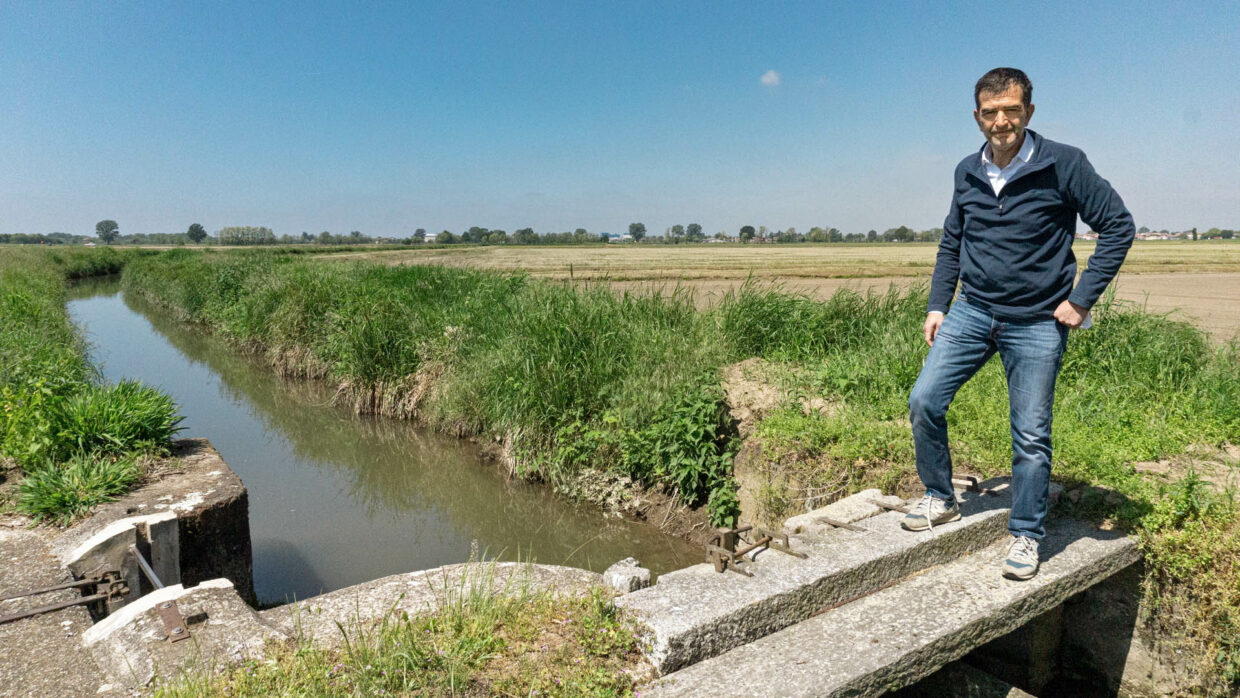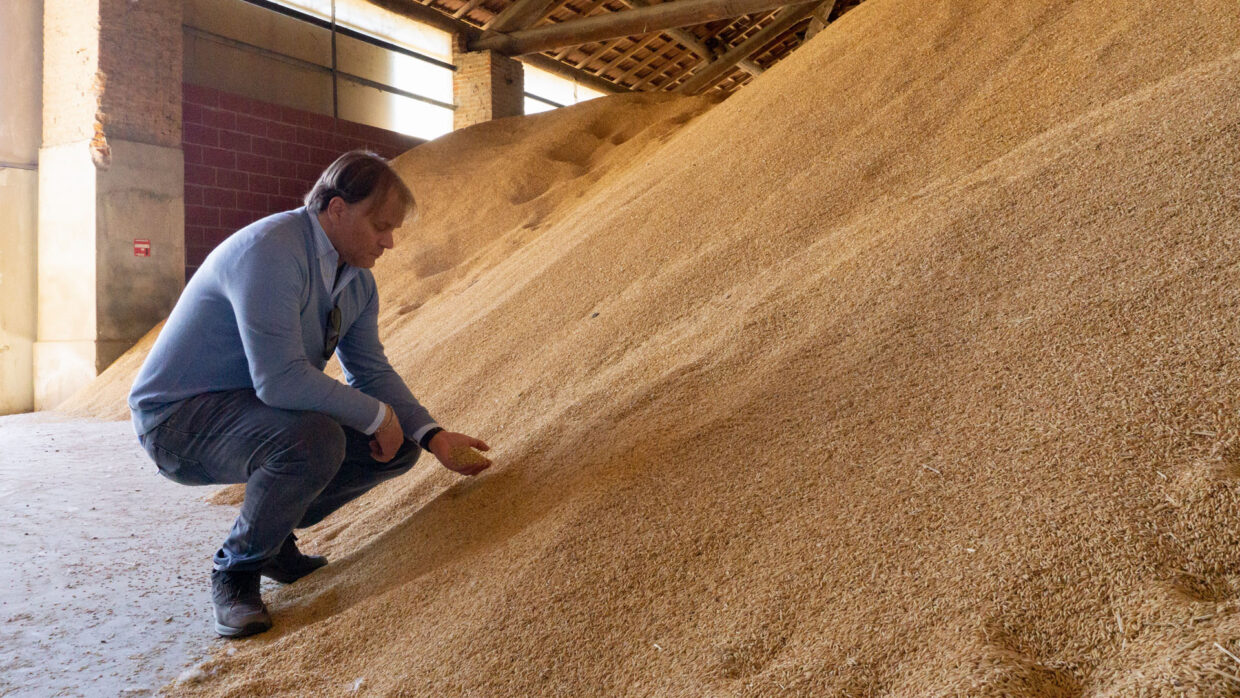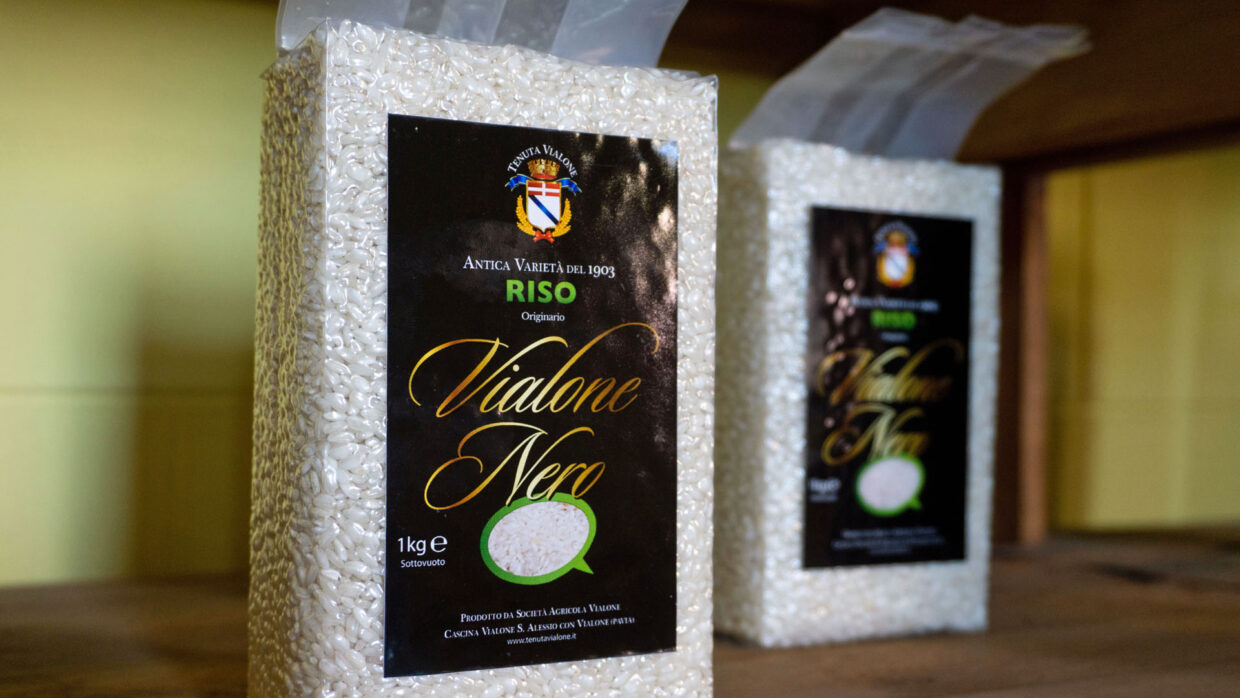The air is starting to warm up and a light spring breeze accompanies us as we cross the fields. Luigi Bianchi has an eye on his tractor, which has been at work since early morning. “Today we’re planting Caravaggio, a rice that’s very similar to the historical Carnaroli rice, which has the advantage of being more profitable,” he explains. Along with his wife, Mr Bianchi produces 600t of unpolished rice per year on almost 100ha. His farm lies in Albuzzano, which is part of Europe’s leading rice-producing province Pavia and located in the heart of the Po Valley.
In Italy, old rice varieties are improved but still marketed under their traditional name, providing farmers with varieties which offer higher yields and lower production costs. Today, the strength of Italian rice production lies in its globally unique genetic diversity. With 228,000ha, 4,000 farms and 1.40m tonnes of rice per year, Italy counts for half of the EU’s production and is Europe’s leading producer and exporter of rice. It’s an important industry, but one increasingly facing competition. “We are up against producers from Asian countries,” explains Mr Bianchi. Among other advantages, they do not have to comply with the same increasing restrictions on pesticides faced by the transalpine producers.

Diversification as strategy
Less than 10km away, on his land in Sant Alessio con Vialone, Stefano Lamberti is busy sowing the Keope variety, also sold under the famous Carnaroli name and often described as ‘the king of rice’. The farm spans just over 200ha, three-quarters of which are dedicated to growing rice. The complete yield of 1,100t/year is sold to the food industry. “Our sector is still based on the free market principle of supply and demand,” he says. “In addition to the small number of structured industry contracts, there is a lack of planning in the sowing process, which is reflected in market prices. They are highly volatile over the years.”
In this environment, diversification is practically indispensable for Italian rice farmers to reduce risk and better redeem their investments. Back on the farm, Mr Lamberti picks up a bag of rice and presents it with pride. It happened to be on his farm in 1903 that the Vialone Nero variety, emerging from a spontaneous mutation, started to breed, giving rise to a great number of varieties that dominate the landscape today. “Thanks to collaboration with the University of Pavia, we resurrected the Vialone Nero in 2015, after it had been abandoned in recent years. We are now the only ones to preserve the seed and produce 2t/year. We couldn’t manage without genetic improvement. But it’s also important not to abandon the classic varieties; it’s just that their quality must be reflected in the sales prices. “
Old varieties at risk

Piedmontese rice grower Igiea Adami transplanting Carnaroli rice in water.
It’s an opinion shared by Igiea Adami, who, on his 150ha dedicated to rice cultivation in the province of Verceil, continues to produce Carnaroli, comprising 15% of the 1,100t of rice he produces per year. One third of this production is still transplanted into water by hand and grown without chemical support. “Because of fluctuating prices and high production costs, classic varieties are increasingly disappearing from farms,” says Mrs Adami. “But we are still convinced of their potential.”
He sells all of the old varieties harvested to the regional market. The rest is mostly exported. “For the more productive varieties, we have established cultivation contracts with processors over the past five to six years, although I’m concerned that this may be a double-edged sword in terms of bargaining power.
“Another important issue is the limitation imposed on pesticide use, as some of them are authorised abroad.” There are no mutual regulations in rice farming today; neither within the EU nor between Europe and third country producers. The result: Lower yields, and an increase in production costs. “As a solution, those who can – like us – are implementing precision farming techniques,” says Mrs Adami. “But this is rarely sufficient to achieve equal competitiveness.”
Industry contracts and transparency
Imports of Indica milled rice from Cambodia and Burma to Europe have been curbed by a protective tariff adopted by the European Commission in 2019, explains Stefano Greppi, president of the Coldiretti (Italy’s largest agricultural union) for the Pavia region. But the tariff is now coming to an end and there has been a sharp increase in imports of Burmese Japonica milled rice, which is not subject to this duty.

Stefano Greppi, president of the Coldiretti union for the Pavia region and rice producer in Rosasco.
What’s more, the past two years have seen an increase in imports from non-EU countries – above all Thailand – of rice in packages smaller than 5-20kg. “This phenomenon has put the European rice industry out of business,” states Mr Greppi. “It has allowed competitors to gain shelf space in our supermarkets, and it cannot be solved by continuing to rely solely on the protection of import duties.”
Another aspect to the problem is the lack of ‘serious’ industry contracts, which currently are unlikely to exceed 1% of national production. “The industry prefers to maintain a fragmented supply because it would benefit less from binding price agreements, but industry contracts – structured to involve producers, processors and retailers – are crucial to ensuring that farmers receive a market price that at least covers their costs,” says Mr Greppi. Finally, products should be traced and labelled with their complete origin, from seed to packaging. “This wouldn’t only help in justifying the price but would protect made in Italy products.”
The question of water
Let’s return to the Bianchi farm. “We absolutely need a more structured industry,” Mr Bianchi agrees, nodding his head. “We are planning to create a Protected Geographical Indicator (PGI) for Po Valley rice. Traditional varieties can be a real benefit to the sector if they are protected by a label, and it is important to value them, so that quality and diversity are not lost.”
It’s nearing midday as we drive through both sown fields and those still waiting to be harrowed in Mr Bianchi’s pick-up. Before returning, he wants to show us the water intake, a fundamental resource for crop growth: The water comes from the Naviglio Grande, a 50km long canal which carries water of the Ticino from the foothills of the Alps to Pavia. It crosses the lands of the irrigation consortium, over which he presides, and is then distributed through several canals to his farmland.

Rice grower Luigi Bianchi at the Naviglio Grande channel; from this point onwards, the water irrigates his own fields.
On top of the many challenges facing the European rice champion, water scarcity is also an issue. “Water is vital for our sector,” says Mr Bianchi: Rice is a flooded crop requiring huge amounts of ‘blue gold’ to grow. “Water preservation is an issue that is becoming more important every day. Optimising management of the Alpine and pre-alpine basins, which feed the lakes from which all our irrigation canals originate, will be a priority for us in the years to come.”


